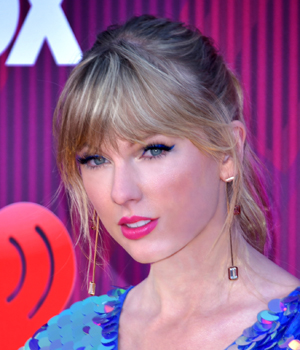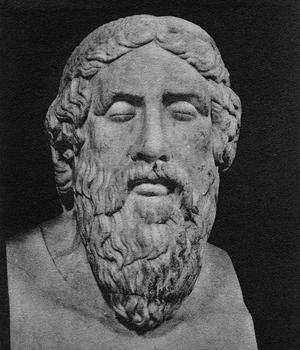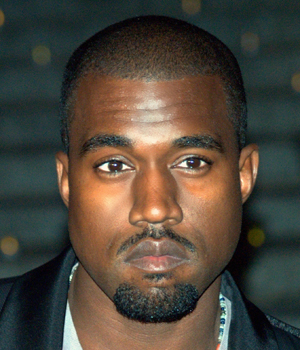
Your complimentary articles
You’ve read one of your four complimentary articles for this month.
You can read four articles free per month. To have complete access to the thousands of philosophy articles on this site, please
Articles
Taylor Swift’s Liar Paradox
With the help of renowned logician Taylor Swift, Theresa Helke introduces four fundamental paradoxes: the Liar, Epimenides’, the Truth-Teller, and the No-No.
Consider the following statement:
“All the liars are calling me one.”

Taylor ‘Would I lie to you?’ Swift
Taylor Swift © Glenn Francis 2019. Creative Commons 4.0 License.
It’s a lyric. The singer-songwriter Taylor Swift sings it in ‘Call It What You Want’ from her album Reputation (2017). In doing so, Swift states that all liars are calling her a liar. We shall call this statement ‘Swift’s Statement’.
One might think that the lyric refers just to some personal spat. Au fait listeners may suspect that Swift is taking aim at Kanye West or Kim Kardashian West. Such listeners will know that the then-husband-and-wife claimed that Swift had done something which she denies doing (namely, approve a lyric).
But more than a shallow pop issue, Swift’s Statement concerns a deep philosophical one: that of ‘ungrounded’ sentences. I shall use Swift’s lyric to introduce four famous paradoxes: the Liar, Epimenides’, the Truth-Teller, and the No-No paradoxes. I’ll also argue that while one might think Swift’s Statement is a version of the Liar paradox, it is in fact a version of the Truth-Teller paradox, and, when conjoined with another sentence, forms a version of the No-No paradox. In short, Swift’s ‘liar’ paradox is not the Liar, but it is nonetheless a paradox.
Getting Started
To show that Swift’s Statement is not a version of the Liar paradox (which I’ll introduce in a sec), I need to define two terms and acknowledge three assumptions.
Definitions:
A liar: someone who says only false things; and
A truth-teller: someone who says only true things.
One could examine the paradox with a different set of definitions: for example, a liar is someone who says some true things as well as some false things. But I leave that examination to someone else.
Assumptions:
First assumption: Any sentence is either true or false. So for example, ‘I’m in Geneva’ is either true (yes, I’m in Geneva), or false (no, I’m not in Geneva). It can’t be neither true nor false: either I’m in Geneva or I’m not! It also can’t be both true and false: I can’t both be in Geneva and not be in Geneva. In logic, we call this assumption the principle of excluded middle. That is, any sentence has a truth value, and if the sentence is false, then its negation is true. So if ‘I’m in Geneva’ is false, then its negation ‘I’m NOT in Geneva’ is true.
Second assumption: The set of ‘liars’ isn’t empty – there is at least one liar. This is important because otherwise ‘All the liars are calling me one’ would be vacuously necessarily true. In a world where there are no liars, obviously, there are no liars who aren’t calling Tay a liar. In such a world, we’re not in a position to point at any liar and say ‘See? She’s not calling Tay a liar’. So in a world where there are no liars, it’s not possible for ‘All the liars are calling me one’ to be false. It must therefore be true. For Swift’s Statement to be false, there must be at least one liar who isn’t calling Tay a liar. So, to keep things interesting, we’re taking the set of liars to contain at least one liar. And if we’re considering the world mid-2021, this seems like a reasonable assumption.
Third assumption: in the universe within which we’ll be considering the truth value of Swift’s Statement, people are either truth-tellers or liars, and not both. So, if you say something false, you’re a liar. And if you say something true, you’re a truth-teller. Moreover, if it’s false that you’re a liar, then you’re a truth-teller; and conversely, if it’s false that you’re a truth-teller, then you’re a liar.
So much for definitions and assumptions. Let’s turn to the paradoxes.
The Liar Paradox
The Liar paradox arises from the sort of statement which reads:
“This sentence is false.”
Here, we have a sentence referring to itself and saying it’s false. We shall call this statement the Liar Statement. It is paradoxical because if the Liar Statement is true, then the Liar Statement is false. And if the Liar Statement is false, then the Liar Statement is true.
Now, for any sentence S to be a version of the Liar paradox, it has to satisfy what I’ll call the Liar Paradox Biconditional (LPB), like this:
‘Sentence S is true only if S is false.’
Therefore for Swift’s statement to be a version of the Liar paradox, it would have to be the case that if it were true, then it would be false; and if it were false, then it would be true. So, if Swift’s Statement satisfied the LPB, that would make it a (non-identical) twin of the Liar Statement, since the Liar Statement is also true if and only if the Liar Statement is false.
However – unlike in the case of the Liar Statement – it’s not true that Swift’s Statement is true if and only if Swift’s Statement is false.
Assume that Swift’s Statement is true. In other words, suppose that all the liars are calling Swift a liar. But because they’re liars (and we’ve defined a liar as someone who utters only false sentences), it’s false that Swift is a liar. So she’s telling the truth – which is consistent with our assumption that Swift’s Statement is true. In uttering her Statement, Swift is speaking the truth. So we see that if Swift’s Statement is true, then Swift’s Statement is true. So we’ve disproved one conditional which makes the LPB, namely, that it’s not the case that if Swift’s Statement is true, then Swift’s Statement is false. So Swift’s lyric is not a version of the Liar paradox.
Epimenides’ Paradox

Epimenides the paradoxical Cretan
One might think that Swift’s Statement is a version of the contingent liar, otherwise known as Epimenides’ paradox – and one would be right, inasmuch as Swift’s Statement can just be plain false. Let’s look at that now.
Epimenides’ paradox arises from a sentence which, supposedly, was uttered by the Cretan philosopher Epimenides:
“All Cretans are liars.”
Let’s call this ‘Epimenides’ Statement’. Depending on the circumstances, Epimenides’ Statement can be false. This happens if there’s at least one Cretan who isn’t a liar who also isn’t Epimenides. Indeed, in this case, Epimenides is speaking falsely – he’s lying – in saying that all Cretans are liars.
Things work similarly when it comes to Swift’s Statement. Depending on the circumstances, ‘All the liars are calling me one’ might be false. In this case, Swift is a liar (from our definition), since there is a liar (other than her) who isn’t calling her a liar.
Since this scenario gives us a non-paradoxical reading of Swift’s sentence, we might wonder whether we can devise a scenario giving us a non-paradoxical reading in which we take Swift to be a truth-teller. In other words, can we make Swift’s Statement a version of the Truth-Teller paradox? The answer is yes.
The Truth-Teller Paradox
The Truth-Teller Statement is :
“This very sentence is true.”
What makes it remarkable, indeed paradoxical, is that there seems to be no way to tell whether the Truth-Teller Statement is true or false. To quote Chris Mortensen and Graham Priest, “Indeed, it seems hard to see how there could even be anything to choose between the hypotheses. More particularly both hypotheses seem to be consistent: from neither hypothesis does there appear to be deducible a contradiction” (‘The Truth Teller Paradox’, Logique et Analyse, 24, 1981, p.381). In other words, whether we assume that the Truth-Teller Statement is true, or whether we assume that the Truth-Teller Statement is false, we can’t derive a confounding conclusion such as ‘the Truth-Teller Statement is both true and false’.
Contrary to the liar case, to be a Truth-Teller paradox, a sentence S need not satisfy the LPB. Rather, it needs to satisfy the Truth-Teller Conjunction (TTC). This conjunction is the logical connective which in plain English we read as ‘and’. Here’s the TTC:
If S is true, then S is true; and if S is false, then S is false.
So it won’t be that the Truth-Teller Statement is true if and only if the Truth-Teller Statement is false. Rather, it’ll be the case that:
If the Truth-Teller Statement is true, then the Truth-Teller Statement is true; and
If the Truth-Teller Statement is false, then the Truth-Teller Statement is false.
Returning now to Swift’s lyric. We can get a version of the Truth-Teller paradox if for example we suppose that no one is saying anything except Swift and Kanye West, and West is saying:
‘Swift is a liar’
Let’s call this ‘West’s Statement’. But Swift is still saying Swift’s Statement, ‘All the liars are calling me one’.
Note that to be a liar, a person must speak, and again, here we’re assuming only Swift and West are speaking. Now, either Swift is telling the truth – Swift’s Statement is true – or she is not – Swift’s Statement is false. If she’s telling the truth, then West is lying, and Swift’s Statement is indeed true. But if she’s lying, then West is telling the truth, and Swift’s Statement is indeed false, since Swift is not calling herself a liar even though she is one. So in this scenario, Swift’s lyric is similar to the truth-teller sentence, in that if Swift’s Statement is true, Swift’s Statement is true, but if Swift’s Statement is false, Swift’s Statement is false, and moreover, there seems to be no way to determine which hypothesis – ‘Swift’s Statement is true’ or ‘Swift’s Statement is false’ – is true. To use the technical term, Swift’s Statement is ungrounded. That is, there’s nothing to make it true. It breaks what in logic we call the thesis of truth-maker maximalism, according to which ‘If a sentence is true, there’s something which makes it true’. Instead, here, the ungrounded Swift’s Statement is a version of the Truth-Teller paradox.
Taking Stock

Kim Kardashian
© David Shankbone 2009. Creative Commons 3.0 License.
With the liar paradox, we saw that one can consistently assign neither truth nor falsity to the Liar Statement ‘This sentence is false’. If we assign truth, then the Liar Statement suggests that the Liar Statement is not true but false. If we assign falsity, then the Liar Statement suggests that the Liar Statement is not false but true. And we saw that in the case of the lyric ‘All the liars are calling me one’, it isn’t that, it’s not that one can consistently assign neither truth value. In other words – and to remove the double negation – one can consistently assign one truth value. Indeed, we saw that if we assign truth – if we have reasons to say it’s true – then Swift’s Statement, ‘All the liars are calling me one’, confirms that Swift’s Statement is true.
Next, with the Truth-Teller Paradox, we saw that one can consistently assign, not neither but each truth value. If we suppose that no one is saying anything except West and Swift, and West is saying ‘Swift is a liar’, Swift, in singing her Statement, could be either telling the truth, or lying. Yet from neither hypothesis – ‘Swift is telling the truth’, or ‘Swift is lying’ – does there appear to be deductible a contradiction. This makes Swift’s Statement ungrounded.
Swift’s ‘liar paradox’ therefore appears to be not an actual Liar paradox, but a scare-quoted liar paradox. In other words and despite the words in the lyric, it’s not a Liar paradox but a different paradox. We’ve established that it can be a version of the Truth-Teller.
In the final part, we’ll consider whether Swift’s Statement might be one of a pair of sentences in a fourth paradox.
The No-No Paradox
Having established that Swift’s Statement is a version of the Truth-Teller paradox, one might go a step further and ask whether here we might also have a version of the No-No paradox. Spoiler: we do!
The No-No sentences – plural! – we’ll call (S1) and (S2). Together they are:
(S1): ‘(S2) is false’
(S2): ‘(S1) is false’
There are four possible truth-value combinations for (S1) and (S2):
(i) both are true;
(ii) the first is true and the second false;
(iii) the first is false and the second true;
(iv) both are false.
However, in the case of No-No sentences, (i) and (iv) are ruled out because if (S1) is true, then it must be that (S2) is false; and if (S1) is false, then it must be that (S2) is true, so they can’t both be either true or false. But what about (ii) and (iii)? We might rule them out too, because each of them would imply that the sentences (S1) and (S2) mysteriously diverge in truth value, despite their being perfectly symmetrical. We appear to have ruled out all four possible truth-value combinations. So (S1) and (S2) both look like respectable sentences, but take them together and there seems to be no way either of them can be either true or false. This is the No-No paradox.
Perhaps one of them (but not both) can be found to be true by bringing in some relevant additional fact from the world – a so called ‘truth-maker’. Rather than go down that rabbit hole, let’s remain focused on Swift and West. Here, taking Swift’s Statement and West’s Statement together, we have a No-No pair of sentences. One way of paraphrasing Swift’s Statement and West’s Statement is as (SS) and (WS) respectively:
(SS): ‘(WS) is false’
(WS): ‘(SS) is false’

Kanye West
© David Shankbone 2009. Creative Commons 3.0 License.
If Swift is speaking the truth, and saying that ‘All the liars are calling me one’, Swift is essentially saying that West’s Statement, ‘Swift is a liar’, is false. West, in calling her a liar, is telling a lie. After all, from our assumption, she’s speaking the truth. Likewise, if West is speaking the truth and saying ‘Swift is a liar’, West’s essentially saying that Swift’s Statement is false: Swift, in saying ‘All the liars are calling me one’, is telling a lie. After all, from our assumption, West is speaking the truth, so Swift’s a liar. Swift’s Statement is false.
So we can see Swift’s Statement is analogous to (SS), and West’s Statement to (WS). But then we end up with the No-No problem: It can’t be that (SS) and (WS) have the same truth value, but we can’t choose which is true and which is false: we can’t choose between (ii) and (iii). It must be that one is true, but – contra the thesis of truth-maker maximalism, according to which, if a sentence is true, there’s something which makes it true – there doesn’t seem to be anything that makes either true. Suppose (ii): that (SS) is true and (WS) is false. The reading is stable – we don’t reach a contradiction. But it’s stable also when we suppose (iii); that is, that this time (SS) is false and (WS) is true. And there’s seemingly nothing to help us choose between the two pairs of truth-value assignments.
Conclusion
As we’ve seen, Swift’s lyric makes reference to a deep philosophical issue: we can devise sentences which are consistent but whose truth is ungrounded. Swift’s Statement – ‘All the liars are calling me one’ – is such a sentence. It might be true, and it might be false, but there’s nothing which seems to make it true, and nothing which seems to make it false.
Except, perhaps, one’s allegiances? Whether one chooses to find Swift’s Statement true or false – whether one chooses to side with the (Kardashian) Wests or with Swift – perhaps depends on whether one is a Swiftie or not.
© Dr Theresa Helke 2021
Theresa Helke is a Lecturer in Logic and Philosophy at Smith College in Massachusetts.









